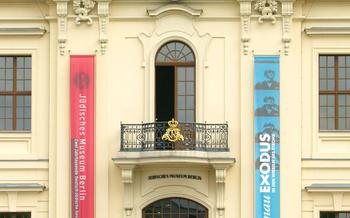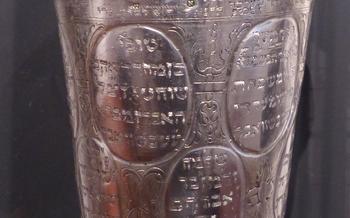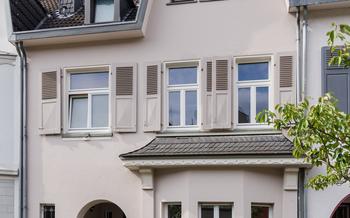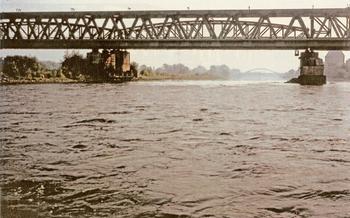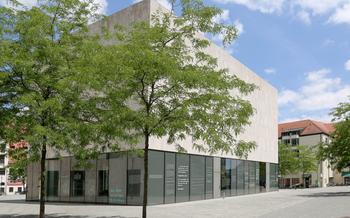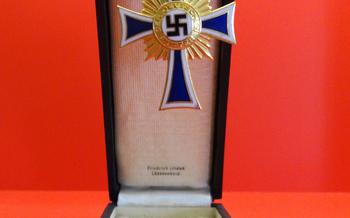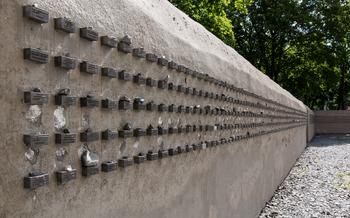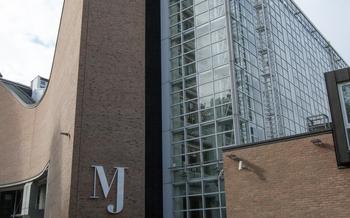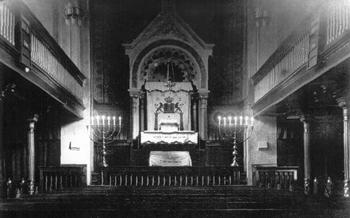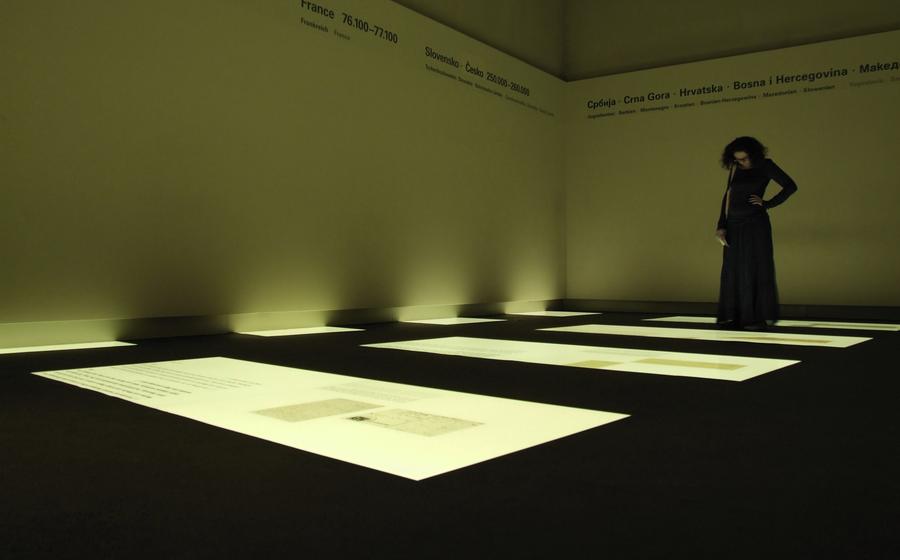
Memorial to the Murdered Jews of Europe
- The Stelae Field
- The Information Center
- The Hall of Names
- The Garden of Exile
- The Silent Room: A Sanctuary for Contemplation
- Educational Programs
- Temporary Exhibitions
- Public Events and Commemorations
- Insider Tip: A Moment of Tranquility in the Heart of History
The Stelae Field
Amidst the vast expanse of the memorial, the Stelae Field emerges as a haunting and evocative tribute to the countless lives lost during the Holocaust. Arranged in a grid-like pattern, 2,711 concrete blocks, each varying in height, stand as silent witnesses to the individual tragedies that unfolded. The stelae, representing the millions of Jewish victims whose identities were erased by the Nazis, create a powerful visual metaphor for the sheer scale of the genocide.
As visitors navigate through the field, the emotional impact intensifies. The seemingly endless rows of stelae, stretching out in all directions, evoke a sense of overwhelming loss and the incomprehensible magnitude of the Holocaust. Each block carries the weight of a human life, a family, a community extinguished by hatred and intolerance.
Among the stelae, personal stories and experiences emerge, adding depth and poignancy to the memorial. Visitors may encounter stelae etched with names, dates, or brief inscriptions, providing a glimpse into the lives of those who perished. These personal touches humanize the victims, transforming the abstract horror of the Holocaust into tangible, relatable narratives.
Walking through the Stelae Field is a profoundly moving experience, a journey that confronts visitors with the harsh realities of the past while simultaneously honoring the memory of those who suffered and lost their lives.
The Information Center
Situated within the Memorial to the Murdered Jews of Europe, the Information Center serves as a comprehensive resource for visitors seeking a deeper understanding of the Holocaust. The center's interactive exhibits and multimedia presentations provide an immersive journey through the history and atrocities of this dark period. Visitors can explore historical documents, photographs, and artifacts that paint a vivid picture of the events that unfolded during World War II.
The Information Center also houses a library and research center, offering a wealth of resources for scholars, educators, and the general public. Here, visitors can access databases, publications, and online resources to further their knowledge of the Holocaust and its lasting impact. Whether you're a student seeking information for a research project or a history enthusiast looking to deepen your understanding, the Information Center provides a valuable resource for education and remembrance.
The Hall of Names
Within the depths of the Memorial to the Murdered Jews of Europe lies a poignant space known as the Hall of Names. Here, in a solemn and reverent atmosphere, visitors can embark on a journey to remember and honor the victims of the Holocaust.
The Hall of Names houses a database containing the names of over 3 million Jewish individuals who perished during the Nazi regime. Each name, meticulously etched in stone, represents a life tragically cut short, a story forever silenced. Visitors can search for specific names, tracing the fates of loved ones or delving into the lives of those whose identities might otherwise be lost to history.
The emotional weight of seeing these names, inscribed in cold, hard stone, is overwhelming. Each name carries a story, a family, a world erased by hatred and violence. The sheer magnitude of the loss is palpable, a reminder of the devastating impact of the Holocaust.
The Hall of Names serves as a powerful testament to the importance of remembrance. It is a place where the victims are not forgotten, where their names and identities are preserved for eternity. By honoring each individual, the Hall of Names ensures that their stories will never be erased, their memories forever etched in the collective consciousness.
The Garden of Exile
Amidst the somber remembrance of the Memorial to the Murdered Jews of Europe, the Garden of Exile emerges as a tranquil oasis, offering solace and reflection for those who were forced to flee Nazi persecution. This serene space, located adjacent to the memorial's main entrance, is a poignant reminder of the displacement and loss experienced by countless individuals during the Holocaust.
Symbolic elements subtly woven into the garden's design evoke a sense of uprootedness and the search for hope amidst despair. A path of cobblestones, representing the arduous journey of refugees, leads visitors through the garden, flanked by rows of benches inviting contemplation and remembrance. Each bench bears a bronze plaque inscribed with a name and the date of birth of a Holocaust victim, symbolizing the individual stories behind the mass tragedy.
At the heart of the garden, a striking sculpture by Israeli artist Dani Karavan commands attention. Titled "Departure," the sculpture depicts a group of figures huddled together, their faces etched with pain and longing. The figures seem to be on the verge of leaving, their bodies poised in motion, capturing the essence of displacement and the uncertainty that lay ahead for those forced to flee their homes.
The Garden of Exile serves as a powerful reminder of the human cost of war and persecution. It is a place to honor the memory of those who were forced to leave their homeland, often with nothing but the clothes on their backs. Through its symbolic elements and poignant artwork, the garden invites visitors to reflect on the enduring legacy of the Holocaust and the importance of empathy and compassion in the face of adversity.
The Silent Room: A Sanctuary for Contemplation
At the heart of the Memorial to the Murdered Jews of Europe lies a sanctuary of silence, a place where visitors can retreat from the clamor of the city and immerse themselves in quiet contemplation. The Silent Room, with its minimalist design and muted lighting, creates an atmosphere conducive to reflection and remembrance.
Stripped of all distractions, visitors are invited to connect with the memory of the victims of the Holocaust. Within this serene space, silence becomes a powerful tool, allowing visitors to process the enormity of the tragedy and to honor the lives that were lost.
Here, in the hushed stillness, visitors can confront the horrors of the past without the interference of outside noise or distractions. It is a space where personal emotions and reflections can take center stage, where the weight of history can be felt viscerally.
The Silent Room serves as a reminder that remembrance is not just about learning facts and figures, but also about connecting with the human stories behind the statistics. It is a place where visitors can pause, reflect, and honor the memory of those who were systematically exterminated during the Holocaust.
Educational Programs
The Memorial to the Murdered Jews of Europe offers a range of educational programs designed to deepen understanding of the Holocaust and its profound impact. These programs are tailored to various audiences, including students, educators, and the general public.
Workshops, guided tours, and seminars delve into the history of the Holocaust, exploring its causes, consequences, and the experiences of those who were persecuted and murdered. These programs provide a platform for critical inquiry, discussion, and reflection, encouraging participants to confront the complexities of this dark chapter in human history.
Guided tours led by experienced educators offer a comprehensive overview of the memorial's various elements, including the Stelae Field, the Information Center, and the Hall of Names. These tours provide historical context, explain the symbolism behind the memorial's design, and share personal stories of victims and survivors.
Educational programs at the memorial emphasize the importance of remembrance and learning from the past. They aim to foster empathy, promote tolerance, and challenge prejudice and discrimination. By engaging with the history of the Holocaust, participants are encouraged to become active advocates against intolerance and hatred.
Holocaust Education and Remembrance
The Holocaust was a systematic, state-sponsored genocide perpetrated by Nazi Germany against the Jewish people. The memorial serves as a powerful reminder of the horrors of this genocide and the importance of learning from the past to prevent future atrocities. Educational programs at the memorial contribute to this mission by promoting knowledge and understanding of the Holocaust, fostering empathy and compassion, and encouraging critical thinking and active citizenship.
Temporary Exhibitions
The Memorial to the Murdered Jews of Europe also hosts temporary exhibitions and installations that explore a wide range of themes and topics related to the Holocaust and its aftermath. These exhibitions often feature works by contemporary artists, historical artifacts, and multimedia presentations. They offer visitors a deeper understanding of the Holocaust and its impact on individuals, communities, and societies.
Past exhibitions have addressed topics such as the role of art in resistance and survival, the experiences of child survivors, and the ongoing struggle against antisemitism and racism. The memorial's commitment to temporary exhibitions ensures that it remains a dynamic and engaging space for education, reflection, and remembrance.
These exhibitions contribute to the memorial's mission by providing diverse perspectives on the Holocaust, challenging visitors to think critically about its causes and consequences, and promoting a culture of remembrance and human rights. They also serve as a platform for dialogue and debate, encouraging visitors to confront the complexities of the past and to work towards a more just and equitable future.
Public Events and Commemorations
The Memorial to the Murdered Jews of Europe serves as a central location for public events and commemorations related to the Holocaust. The most prominent event is the annual Holocaust Remembrance Day ceremony, held on January 27th. This solemn occasion features speeches, prayers, and the laying of wreaths to honor the victims. Special programs, lectures, and discussions are also held throughout the year, delving deeper into the history and impact of the Holocaust. These events provide an opportunity for public engagement, remembrance, and learning, fostering a greater understanding of this dark chapter in human history.
Insider Tip: A Moment of Tranquility in the Heart of History
For a moment of tranquility amidst the somberness of the memorial, seek out the small, unassuming "Garden of Silence" tucked away in a corner of the site. This serene oasis offers a respite from the weight of history, with its lush greenery, babbling fountain, and comfortable benches. Take a break here to reflect on your experience, find solace, and appreciate the beauty that can emerge from darkness.
